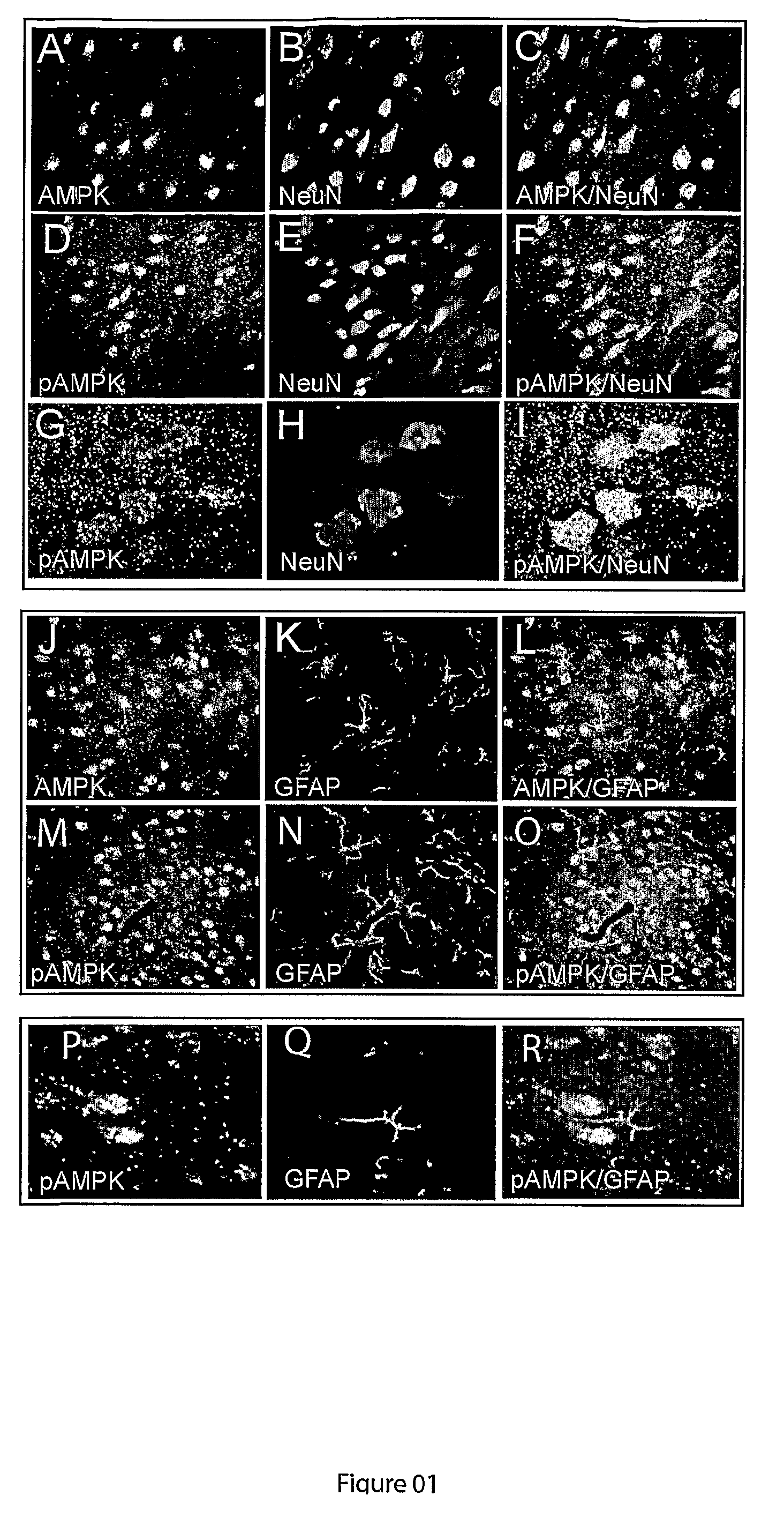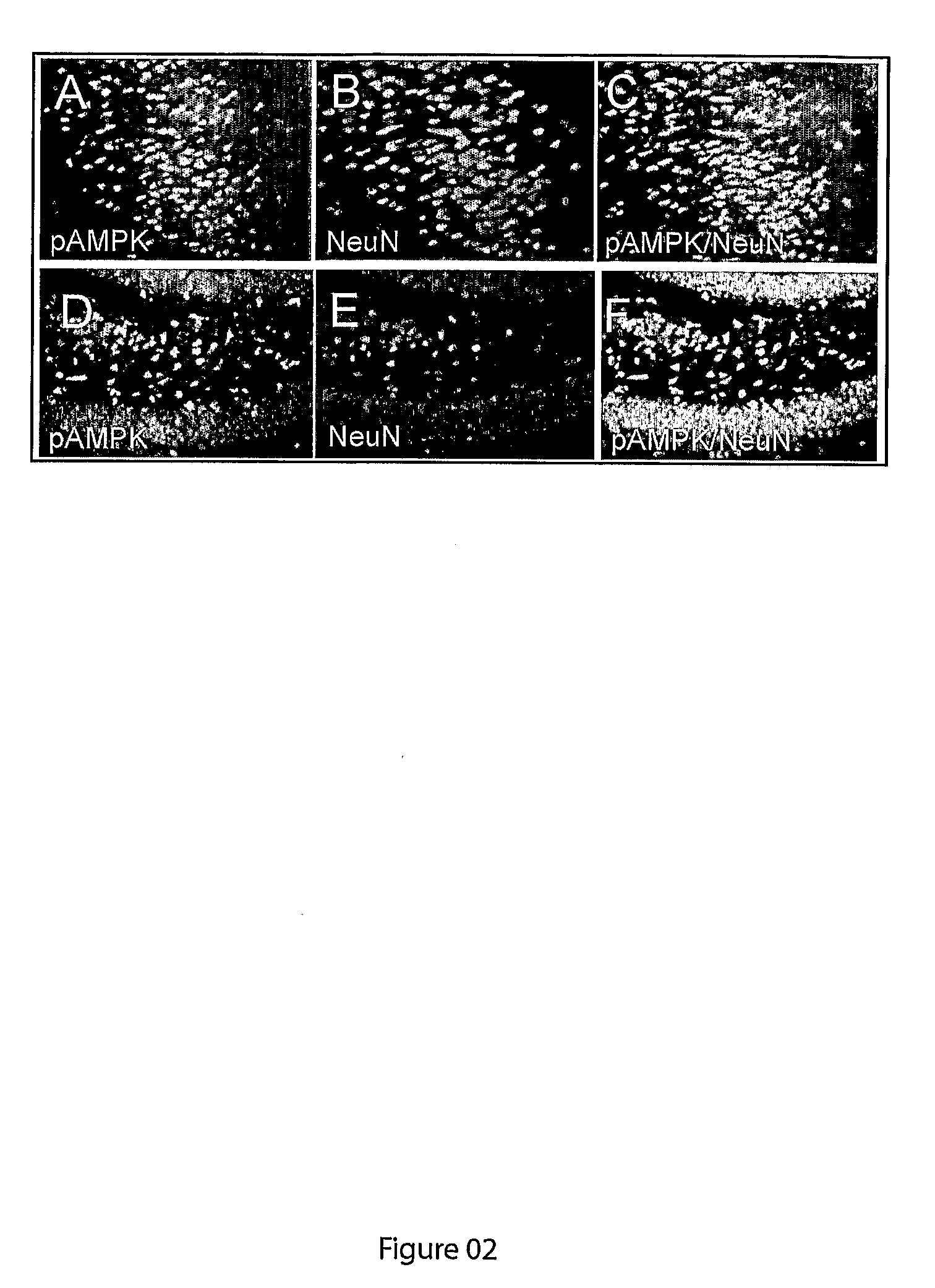Novel method of neuroprotection by pharmacological inhibition of amp-activated protein kinase
a technology of amp-activated protein and amp-activated protein, which is applied in the direction of anti-noxious agents, drug compositions, peptide/protein ingredients, etc., can solve the problems of imposing on the victim, serious physical and emotional damage, and loss of productivity, so as to minimize the loss of brain tissue and neurons, reduce the size of infarcts, and preserve function
- Summary
- Abstract
- Description
- Claims
- Application Information
AI Technical Summary
Benefits of technology
Problems solved by technology
Method used
Image
Examples
examples
Experimental Animals
[0038]The following experiments were conducted in accordance with NIH guidelines for the care and use of animals in research and under protocols approved by the Animal Care and Use Committee of the Johns Hopkins University.
[0039]Ischemic Model
[0040]Cerebral ischemia was induced by 120 minutes of reversible right middle cerebral artery occlusion (MCAO) under halothane anesthesia followed by reperfusion for various times for male C57B6 mice (Charles River) or male rats, as described by McCullough, et al., Stroke, 32, 796-802 (2001) and McCullough, et al., J. Neuroscience, 24, pp. 257-268 (2004), respectively. Intra-ischemic and 22 hour post-reperfusion neurological deficits (NDS) were scored as follows: 0, no deficit; 1, forelimb weakness and torso turning to the ipsilateral side when held by tail; 2, circling to affected side; 3, unable to bear weight on affected side; and 4, no spontaneous locomotor activity or barrel rolling. Any animal without deficit was exclu...
PUM
| Property | Measurement | Unit |
|---|---|---|
| concentrations | aaaaa | aaaaa |
| concentrations | aaaaa | aaaaa |
| pH | aaaaa | aaaaa |
Abstract
Description
Claims
Application Information
 Login to View More
Login to View More - R&D
- Intellectual Property
- Life Sciences
- Materials
- Tech Scout
- Unparalleled Data Quality
- Higher Quality Content
- 60% Fewer Hallucinations
Browse by: Latest US Patents, China's latest patents, Technical Efficacy Thesaurus, Application Domain, Technology Topic, Popular Technical Reports.
© 2025 PatSnap. All rights reserved.Legal|Privacy policy|Modern Slavery Act Transparency Statement|Sitemap|About US| Contact US: help@patsnap.com



